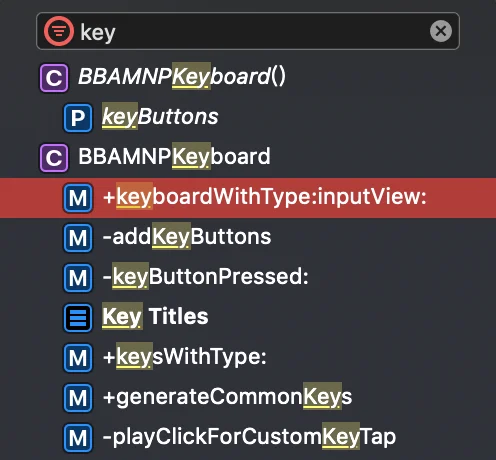Basic Linux Commands
作为非科班出身的技术人员, 关于Linux命令也应该掌握些基本的, 所以整理一下.
Files & Navigating
ls - list all files/folders on current directory (列出当前目录下所有文件和文件夹)
ls -l - formatted listing in line (详细列出所有文件及信息, 每个文件或文件夹占一行)
ls -la - formatted listing including hidden files (详细列出所有文件包括隐藏文件及信息, 每个文件或文件夹占一行)
cd dir - change directory to dir (改变当前目录到dir文件夹)
cd .. - change to parent directory (改变当前目录到父级目录)
cd ../dir - change to dir in parent directory (改变当前目录到父级目录下的dir文件夹)
cd or cd ~ - change to home directory (回到home目录下)
cd - - change directory to last directory (返回进入之前所在的目录)
pwd - show current directory (显示当前目录路径)
mkdir dir - create a directory named dir (创建一个名为dir的文件夹)
rm file - remove file (删除文件)
rm -f file - force remove file (强制删除文件)
rm -r dir - remove directory dir (删除文件夹)
rm -rf dir - force remove directory dir (强制删除文件夹)
rm -r * - delete all files and directories except hidden files under the current directory(删除当前目录下除隐含文件外的所有文件和子目录)
rm -rf / - launch some nuclear bombs targeting your system (删除系统….千万别这么做)
cp file1 file2 - copy file1 to file2 (将file1复制为file2)
mv file1 file2 - rename file1 to file2 (将file1重命名为file2)
mv file1 dir/file2 - move file1 to dir as file2 (将file1移动到dir并重命名为file2)
touch file - create file or update file (创建文件, 或如果文件存在的话更新文件, 如时间戳等, 但不会清空文件已存在的内容)
cat file - output contents of file (输出文件内容)
cat > file - write standard input into file (写入文件内容, 覆盖原有)
cat file1 file2 > file - combine file1 and file2 into file (将文件file1和file2合并后放入文件file中)
cat >> file - append standard input into file (在文件后追加内容)
tail -f file - output contents of file as it grows (当文件内容增加时会打印出来, 一般用于日志监控)
Networking
ping host - ping host (测试主机之间网络的连通性)
whois domain - get whois for domain (查询域名信息)
dig domain - get DNS for domain (查询DNS信息)
dig -x host - reverse lookup host (执行逆向域名查询)
wget file - download file (下载文件)
wget -c file - continue stopped download (断点续传)
wget -r url - recurively download files from url (递归下载 慎用)
curl url - outputs the webpage from url (输出页面内容)
curl -o meh.html url - writes the page to meh.html (web页面写入本地文件)
ssh user@host - connect to host as user (ssh连接user到host)
ssh -p port user@host - connect using port (ssh指定端口连接)
Processes
ps - display currently active processes (报告当前系统的进程状态)
ps aux - detailed outputs (显示所有进程详细信息)
kill pid - kill process with process id (pid) (以pid杀掉进程)
killall proc - kill all processes named proc (杀掉所有名为proc的进程)
System Info
date - show current date/time (显示当前系统日期时间)
uptime - show uptime (显示uptime)
whoami - who you are logged in as (显示当前登录用户)
w - display who is online (显示当前在线用户)
du - show directory space usage (显示当前目录下空间使用)
df - show disk usage (显示磁盘空间使用)
uname -a - show kernal config (显示内核信息)
top - show processes in a dynamic real-time view (实时显示系统各进程资源使用情况)
Compressing
tar cf file.tar file1 file2 - tar files into file.tar (合并file1, file2为file.tar)
tar xf file.tar - untar into current directory (拆解file.tar到当前目录)
tar tf file.tar - show contents of archive (显示tar文件内容)
options:
c - create archive (建立新的备份文件)t - table of contents (列出备份文件的内容)x - extract (从备份文件中还原文件)z - use zip/gzip (使用gzip指令备份)f - specify filename (指定备份文件名)j - bzip2 compression (支持bzip2解压文件)w - ask for comfirmation (确认压缩文件的正确性)k - do not overwrite (保留原有文件不覆盖)v - verbose (显示操作过程)
Permission
chmod 777 file - change permissions of file (修改文件权限)
4 - read (r)2 - write (w)1 - execute (x)
order owner/group/world
chmod 777 - rwx for everyone (所有人可读可写可执行)
chmod 755 - rw for owner, rx for group and world (文件所有者可读可写可执行, 其他人可读可执行)










